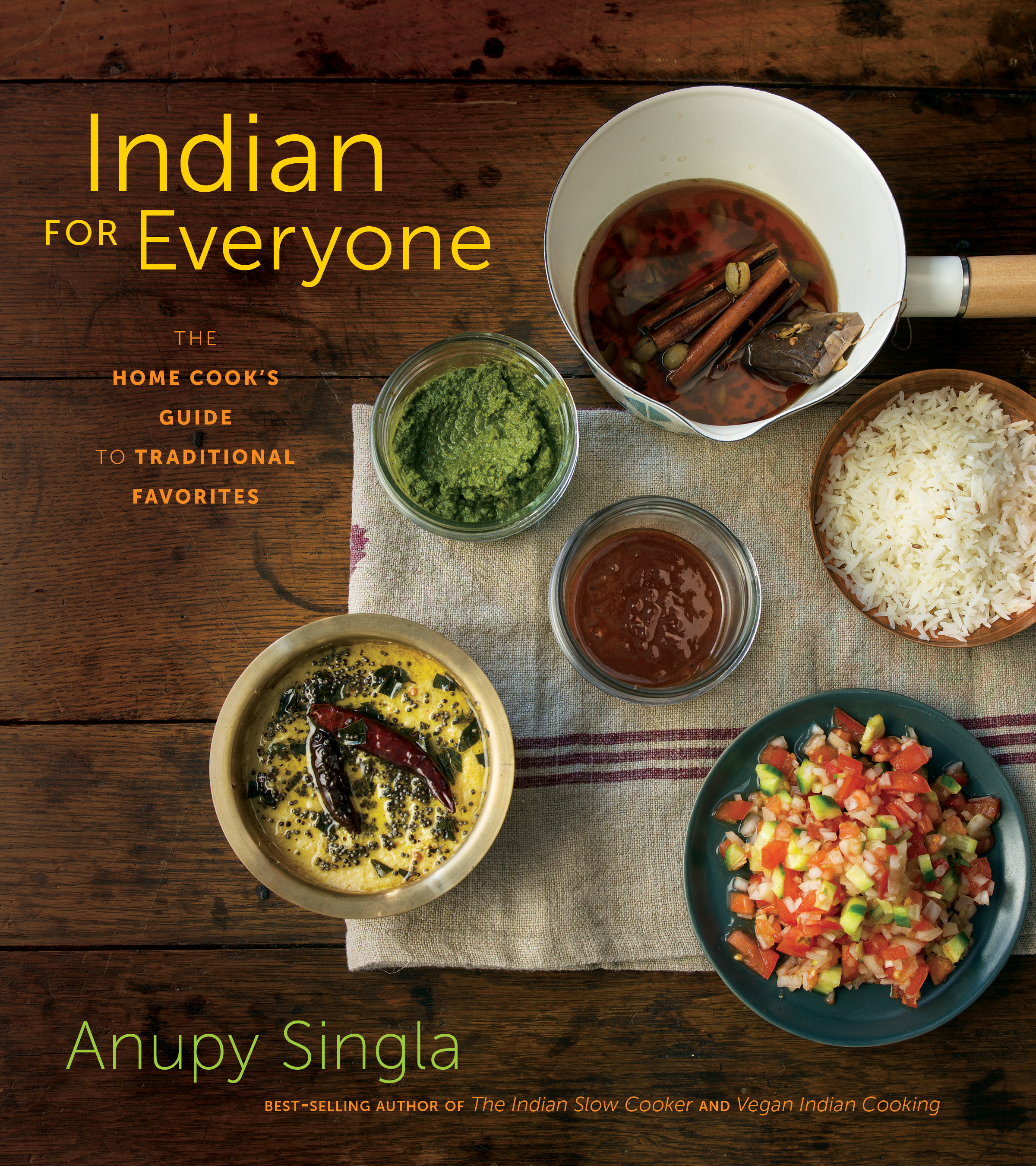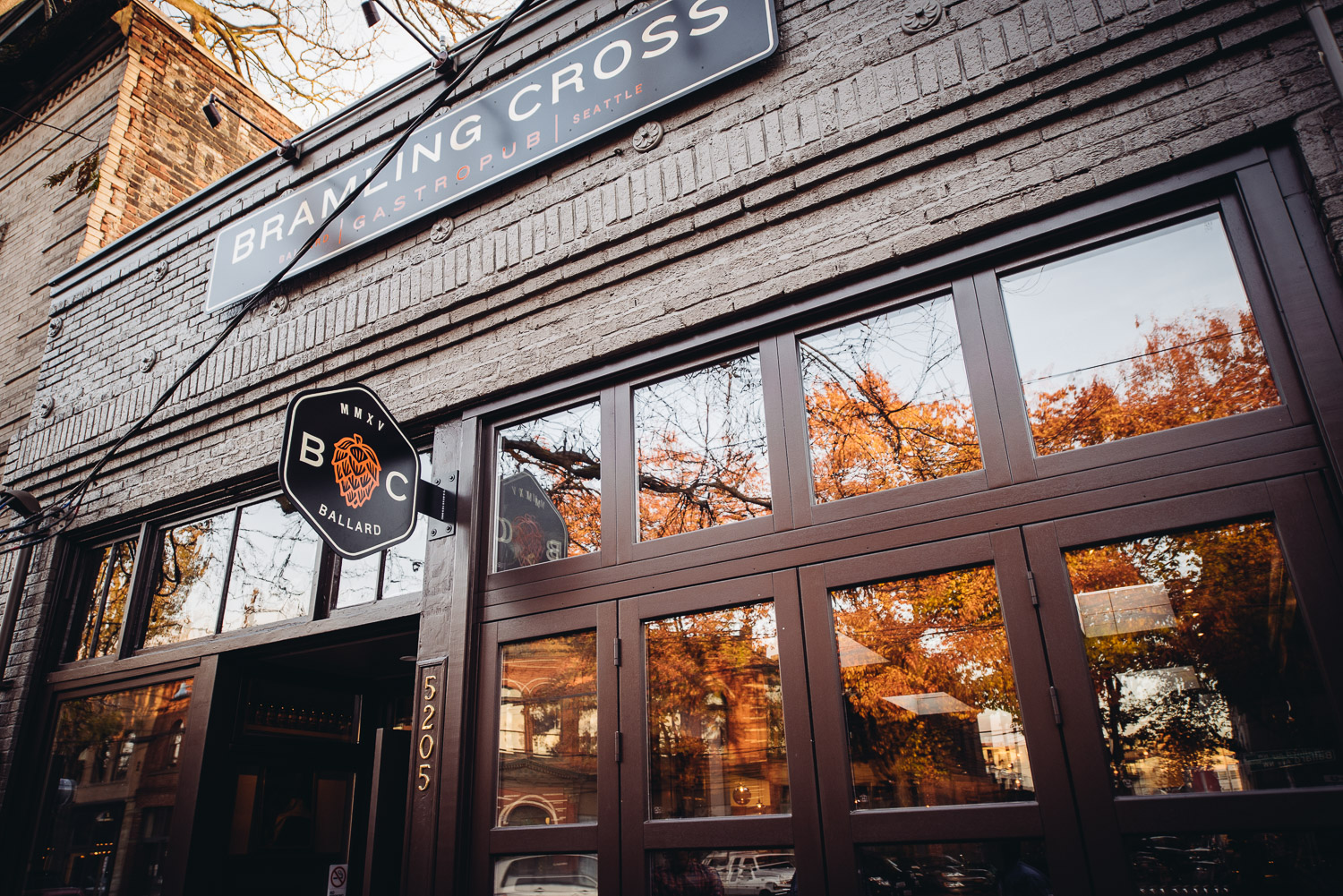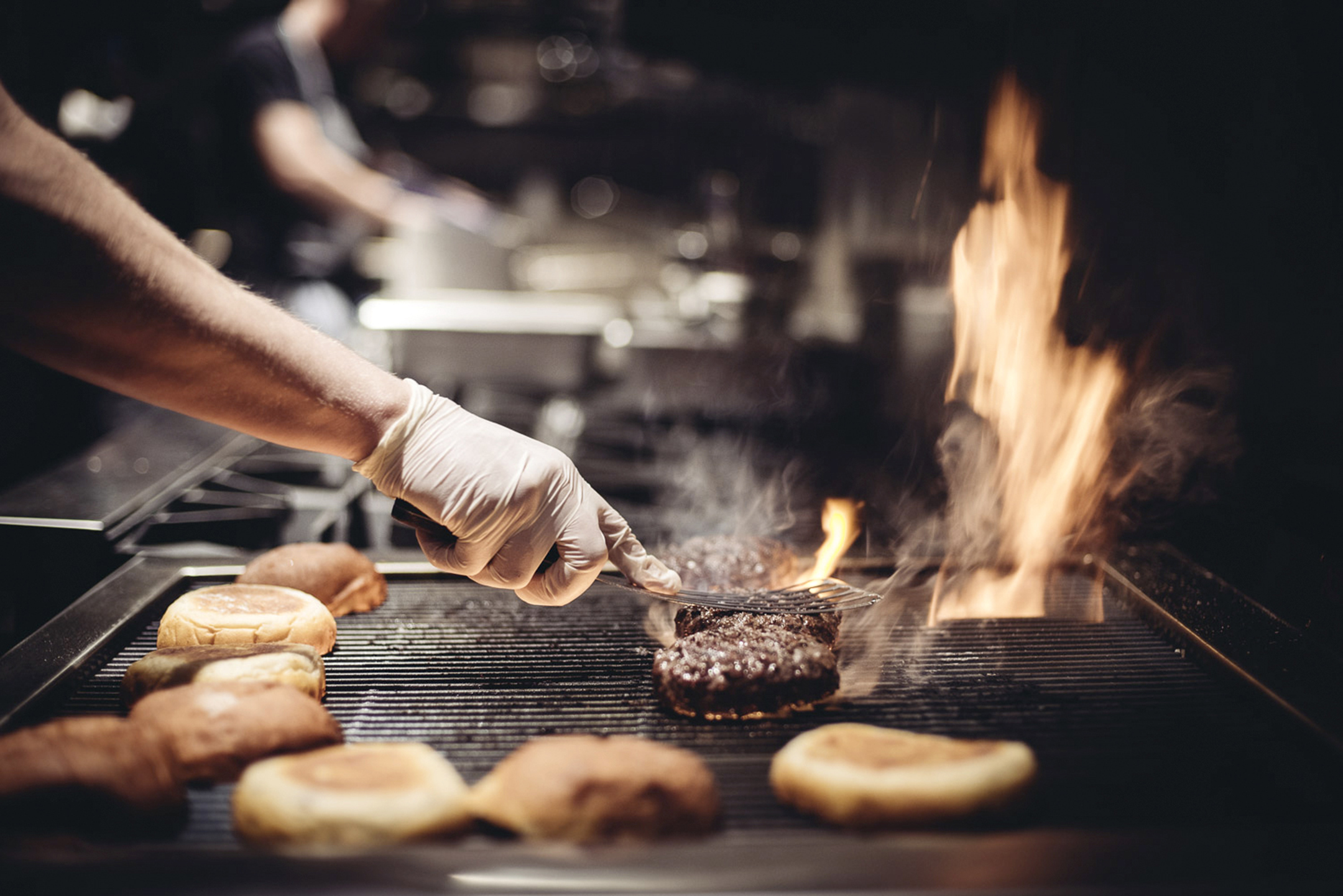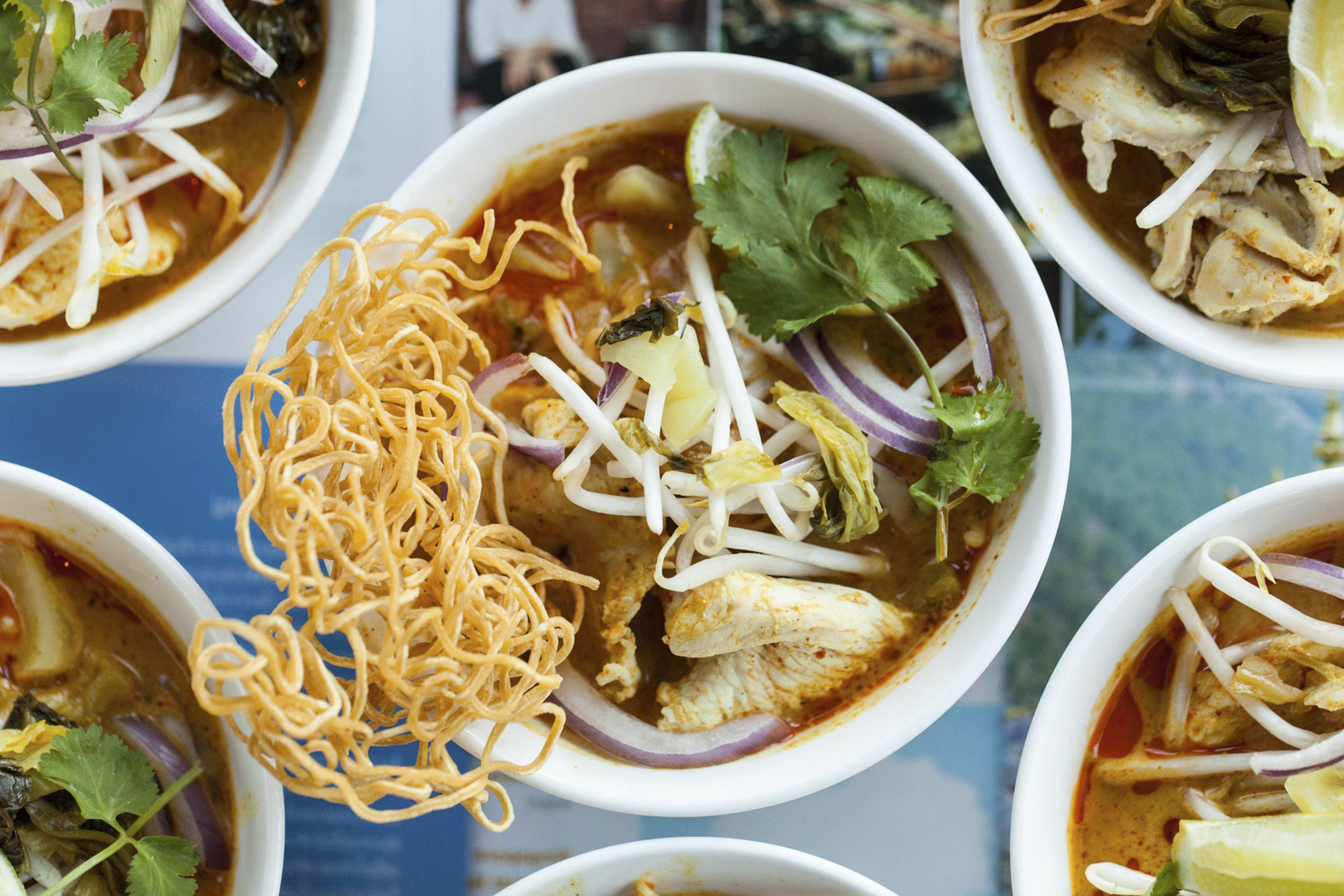Anupy Singla is at the Book Larder tomorrow from 6:30-8 p.m. signing copies of her new cookbook Indian for Everyone: The Home Cook Guide’s to Traditional Favorites and demonstrating a recipe from it. (It’s currently ranked #8 in Indian cookbooks on Amazon.) I spoke with Singla last week about her book, the state of Indian food in Seattle, and why home cooks often shy away from making it. Seattle Weekly: I like how you turn upside down the perception that curry powder is the answer to good Indian food. Curry as you say is just gravy. It’s the various spice mixes that matter – all the masalas. But it’s all that spice gathering that often intimidates home cooks don’t you think?Singla: Yes, I think that that’s often the non-starter for westerners; that they have to buy all of these expensive, hard to find spices/herbs just to make one mix. It’s a bit of investment up front, but if you do that you’re pretty set.SW: If someone was going to make only one blend (out of the many in your book) which would you suggest? And now long is it good for, since you recommend using fresh ingredients?Singla: I think the most versatile is the garam masala. Even though it’s available on store shelves I still think it’s great homemade. And it’s not just for Indian food, but can be used when you’re making a soup or putting beans together on the weekend, or even in a pasta sauce or meat loaf to give it a more in-depth flavor. The spices you use to make that blend are easily found: Cinnamon stick, cloves, coriander…vs., say, a chana masala that has dried pomegranate seed as a key component, which is harder to find in stores. I tell people that if you put these blends together, dry roast the whole spices but then grind little bits of them at a time as needed. The dry, whole-roasted pieces are good for one to two years, while ground, it’s about six months. SW: So forget about curry powder completely? Singla: It’s really only used for British versions of Indian dishes. Curry powder is used more in Southeast Asian and Asian food, not Indian.SW: You mention that westerners are conditioned to expect Punjabi-style food at restaurants. What are the defining characteristics of it, and why is it the go-to version, kind of like Cantonese food is for Chinese food? Singla: There are a lot of people who immigrated from that part of northern India. That style of cuisine is popular in India too; the fiery curries, the tandoori breads. If you look at southern Indian food, there’s dosas with potatoes, all those carbs that are meant for breakfast. [For an Indian restaurant owner], it’s hard to position that kind of dish as an afternoon or evening meal. SW: There’s a western Indian dish in your book, Green Bean Thoran. What are some of the defining characteristics of other region’s cuisines?Singla: In that dish, there’s a subtle flavor of coconut. It’s really about oil swap outs. In Kerala (the west), they use coconut oil. In southern Indian, it’s peanut oil. The other key swap would be your starter spice. In northern Indian (Punjabi food), it’s cumin seed, but in most of the other regions it’s mustard seed. Also, there are the herbs that you finish a dish with: cilantro in northern India, curry leaves elsewhere. SW: Let’s talk about ghee. It’s another one of the reasons westerners shy away from making Indian food; the notion that ghee (clarified butter) makes it very unhealthy. But you say there are good substitutes.Singla: My mom’s been cooking without ghee for 25 years; she uses grapeseed oil instead. In terms of flavoring, there’s almost no difference. I don’t even cook the spices in oil. If you’re doing stovetop cooking, you need oil to caramelize the onions, but it’s not necessary in a slow cooker. But if you like that level of depth that comes from ghee, then go with it. But I’ve seen cookbooks that call for 10 tablespoons of it; that’s crazy. We need a level of fat, but good fat. SW: I’m going to be really blunt here. Indian restaurants in Seattle; I just don’t find them to be very good. The east side has a large Indian population, but I know east Indians who still complain about the food over there. It’s not just Seattle though; it’s hard to find good Indian food throughout the U.S. Why?Singla: Many restaurants, I think, have lost perspective of their roots, and give us what they think westerners want (i.e., north Indian, Punjabi food). If you go to one of these restaurants, the chef may be from another region though, so it’s not the food he or she grew up with. They often use a cookie cutter menu and rely on dumping cream into sauces. A lot of places just make one sauce and then change one ingredient for a different dish. You can’t just use one mother sauce or everything is one-note. Restaurants have a way to go to satisfy people’s palates, but I think the level of what people want is being re-evaluated. They have to use quality ingredients too.SW: Yes, I agree. I often feel like I’m eating poor quality meats covered up in lots of sauce. And speaking of meat, it seems like Indian food is either meat-heavy or the vegetarian dishes are also masked by rich sauces. In your cookbook, I love how you show simple fruits like grapes dressed with lemon juice, fresh herbs and chilies. That’s not something we often see on Indian menus. Is there a lot of fresh fruit eaten in a typical Indian diet? Singla: Every meal in India is pretty much finished off with fresh chopped fruit dressed with lemon juice. I cut up a whole tray of cucumbers and sprinkle them with salt, black salt and lemon, and that’s a treat on a hot day. SW: What’s black salt?Singla: It’s black rock slat mined from Northern Indian and Pakistan and has a sulfuric tang to it. I love a bowl of pomegranate seeds with just a little black salt on top. It adds a pop of flavor to anything you add it to. It’s available for sale on my website.
SW: You have a whole section on breads. So the naan we typically get at Indian restaurants isn’t actually the bread of choice for most Indians?
Singla: Right, because who has an oven that will go to 900 degrees? Rotis and dosas are eaten instead because they don’t require the high heat of a tandoori oven. But for the restaurant (in India too), the tandoori oven is a big showcase, so they tend to serve more naan. Here’s a tip: when you go to an Indian restaurant, ask them for “tandoori roti.” It’s a roti made from whole wheat flour, but it’s cooked like naan.
SW: Any Indian restaurants you plan to visit while you’re here in the Seattle area?
Singla: Yes, there’s a place that does Punjabi sweets in Kent called “Punjab Sweets.” And Chutney’s in Queen Anne. The menu looks interesting.
SW: Darn, we didn’t even get to sweets!
Note: I made a dish last weekend from Indian for Everyone: Punjabi Chili Chicken. Stay tuned for more on that soon!








